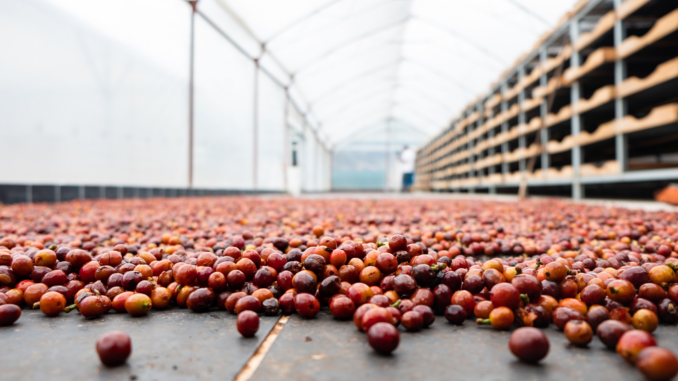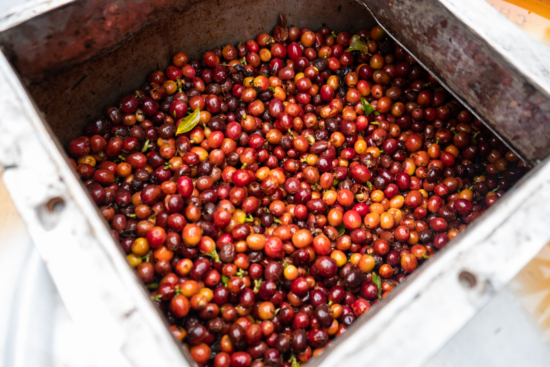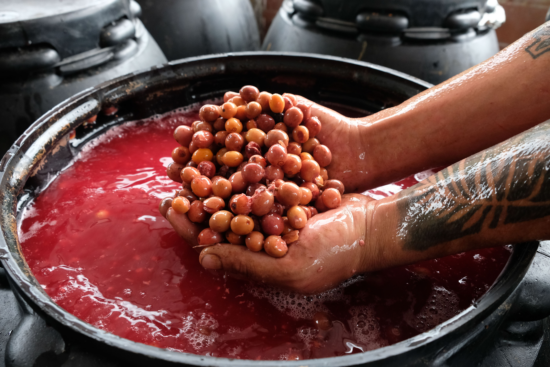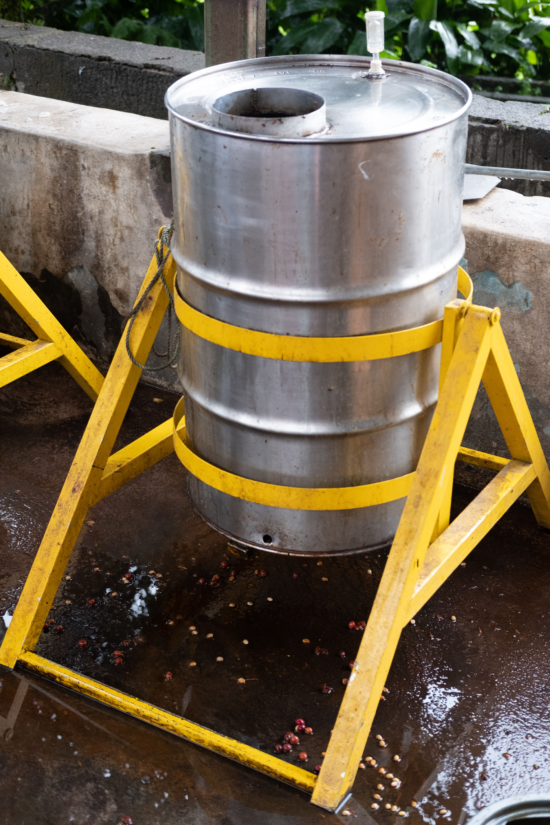
We continue our series on fermentation with a look at the anaerobic process, which has quickly become a favorite in cafés worldwide.
BY TANYA NANETTI
SENIOR ONLINE CORRESPONDENT
Photos courtesy of Bram de Hoog for Ally Coffee
A simple cup of well-brewed coffee can have endless variations of flavors and aromas. These are closely linked to the many chemical aspects of the coffee itself. Origin, varieties, fermentation, and roasting style also deeply influence the final cup, so it’s worth understanding these variables better. Today, we’ll take a look at a newer type of coffee processing that has already become an instant classic: anaerobic.

Bram de Hoog, specialty coffee sourcing manager at Ally Coffee, is originally from The Netherlands. He found his way into green coffee and worked for five years in Central America (in Nicaragua and Costa Rica) before moving to Germany. He often travels to visit Ally’s partners and producers around the world, and he shared with us some of his thoughts on the anaerobic process.
The Anaerobic Process
“Anaerobic processing is a style of fermentation that happens without the presence of oxygen. This can be for natural, honey, or washed coffee,” Bram explains. “Coffee, usually in cherry form (but it can also be pulped), is placed in barrels that are sealed off from the outside air. There’s a one-way valve on top of the barrel which allows oxygen to be pushed out. Fermentation releases gasses which push the oxygen out through this valve, creating an anaerobic environment over time.”
As for the typical flavor profiles of anaerobic processed coffees? “A wide range of flavor profiles exist: This also obviously depends on the type of anaerobic process used—washed, honey or natural,” Bram says. ”However, in general, one could say anaerobic-processed coffee has a heavy body, and a winey/rum and raisin-like flavor, in addition to tropical fruit and notes of fermented cacao.”

Positives and Negatives
Like any other fermentation, anaerobic processing also has both pros and cons. “It can drastically increase a coffee’s cup score and hence the value of the coffee,” Bram says. Furthermore, the anaerobic process, when compared to other types of fermentation, can give producers better control of the fermented batch. Once the right profile has been found for a coffee, no outside factors (temperature, rain, air quality, etc.) precludes the possibility of repeating the exact same process for the following batches.
On the other hand, Bram adds that this type of fermentation “has a steep learning curve, and any mistake can ruin a batch of coffee.”
Moreover, it should be remembered that anaerobic fermentation is more expensive than the more traditional types of coffee processing (natural, washed, and honey). Anaerobic fermentation requires special sealed tanks to be used during the fermentation; these must then be regularly monitored for accurate control of the processed batches, so it requires additional manpower. Hence, this is not a process that all producers can afford.

The Future of Anaerobic Processing
Finally, Bram shares a few words about how the anaerobic process is evolving.
“As the process becomes more widespread,” he concludes, “there are more and more sub-variations of anaerobic. It should also be emphasized that the pioneers of this process were very meticulous in developing their recipes; some newer producers, on the other hand, may not be as careful with their processing.”
As coffee fermentation evolves over time, there will be more experimentation with the anaerobic process. For now, its popularity is continually increasing.
ABOUT THE AUTHOR
Tanya Nanetti (she/her) is a specialty-coffee barista, a traveler, and a dreamer. When she’s not behind the coffee machine (or visiting some hidden corner of the world), she’s busy writing for Coffee Insurrection, a website about specialty coffee that she’s creating along with her boyfriend.


